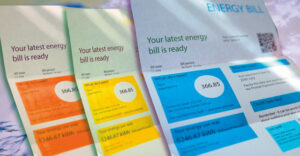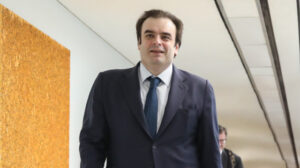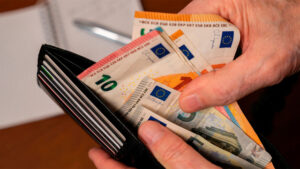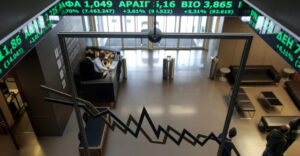To put out the fires lit by the heatwave and July’s wide fluctuations in the wholesale price of current for a fortnight, the government has succeeded in keeping the electricity kilowatt-hour below 15 cents with the support of power generators and the big discounts offered by the PPC.
As a result, most consumers were not burdened with large increases in August, paying for electricity on the green tariff at 14.7 cents a kilowatt hour, up just 9% from July. Were it not for the 53% PPC discount and the 1.6 cents per kilowatt-hour subsidy, the utility’s residential green tariffs would have been 24.9 cents, up 84.4% from July.
Megawatt-hour
However,the August price hike does not close the door on the big energy cost front, which remains open for the coming months. Uncertainty in the global market is resurging after the assassination of Hamas leader Ismail Haniyeh, and fears of retaliation in Israel pose risks of renewed flare-ups in the Middle East.
In the likelihood of such a development prices will remain at high levels, something already hinted at by the international TTF stock market index, which has broken out of the 32 euros per megawatt hour level and is now flirting with 37 euros. Market fears are that the escalating conflict in the Middle East could disrupt Israel’s gas flows to Egypt and Jordan and affect the global LNG market. This would put strong pressure on Europe’s LNG supply at a time when the fuel storage facilities are currently being filled.
As Egypt currently relies on LNG and pipeline gas imports to meet its needs, such a development would force it to source more LNG cargoes, intensifying competition for the fuel.
Tellingly, Egypt had already scheduled the arrival of 20 LNG cargoes before the Haniyah assassination and has completely halted its exports amid shortages. According to analysts, Cairo is preparing for the worst-case scenario in terms of developments with Israel, Hezbollah and Iran, and this is a factor that is coming under the microscope of analysts and traders.
Ministry of Energy’s defenses
The geopolitical turmoil is also being closely watched by the Greek Ministry of Environment and Energy, ready to quell a new price spike. The government staff has decided to revise its original plan to impose an extraordinary tax on gas consumption for power producers only for August.
The tax of 10 euros per thermal megawatt-hour imposed by the Ministry of Energy will last up to three months, which demonstrates the government’s attempt to create a defense mechanism in case developments in the electricity market make it appropriate and a second round of subsidies is needed. Based on the consumption made by the natural gas plants of power generators for August, it is projected that the collection of revenues to be used for household subsidies will approach 30 million euros, taking into account last year’s corresponding consumption, which is not expected to vary significantly this year. Part of this amount will be allocated to this month’s subsidies and the rest will be left to cover future needs. Besides, with the newest legislation the validity of the measure is extended and starting in August it can potentially cover up to October.
At the same time, concerns have begun to be raised by the power generation industry about the course of natural gas prices. On the one hand, due to the runaway crisis in the Middle East that is fostering an appreciation climate and giving signals of a rise in TTF, and on the other hand, due to the extraordinary fee imposed on power generators. The new tax is expected to raise the variable cost of the units, which will eventually be passed on to the wholesale price and from there passed on to consumers.
In contrast to the green and yellow variable tariffs where consumers will pay reasonable prices in August, the uphill climb is the 12-month blue fixed tariffs, which more and more households and businesses are opting for.
“Blue” revaluations
The July price spike and geopolitical uncertainty are driving many consumers to the safety of fixed tariffs, but these are already appearing to have appreciated compared to the previous two months. The reason is that forward contracts (agreements to buy or sell electricity at a predetermined price) have become more expensive, so suppliers have to pre-purchase power for their customers at higher prices.
The PPC is one of the first companies to revise prices with increases of 13.6% to 15.5% for the three blue tariff programs (myHome Enter at 0.145 cents per kilowatt-hour, myHome Online at 0.142 cents per kilowatt-hour and myBusiness Enter at 0.145 cents per kilowatt-hour) with a guaranteed price for 12 months.
.
With the PPC discounts and government subsidy, the blue tariff is just 3-6 cents behind the green tariff. There are of course much cheaper six-month products on the market, such as Protergia’s (Protergia Value Safe) with a price of 0.095 cents and a fixed fee of 9.90 euros, and ZeniΘ’s 12-month product, with an average charge (including the fixed fee) of 13.6 cents per kilowatt-hour.
Therefore, the blue tariffs remain more competitive than the green tariffs, which should take into account that in the coming months (if everything goes smoothly) the 1.6 cents subsidy will not be incorporated into the variable tariffs, which currently tend to eliminate the differences between blue and green tariffs. In other words, it is expected that blue tariffs will continue to be attractive as providers realize that they constitute a product with high market demand, as consumers are tired of the price dizziness for a year. But they are waiting for international developments, as in this volatile environment forward prices are not attractive.
Ask me anything
Explore related questions





